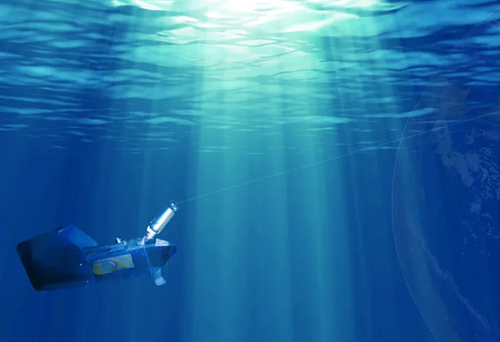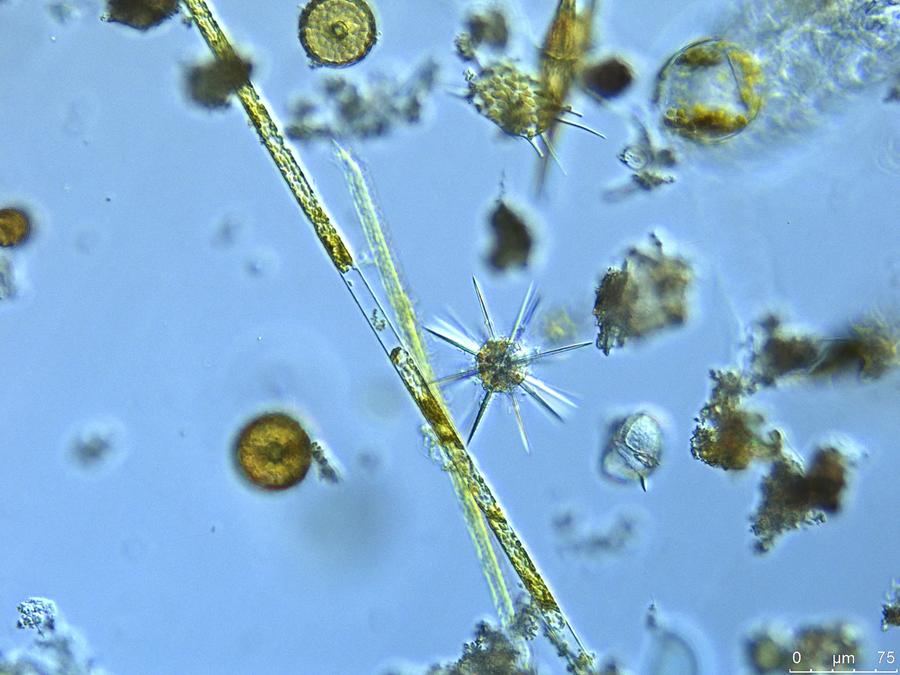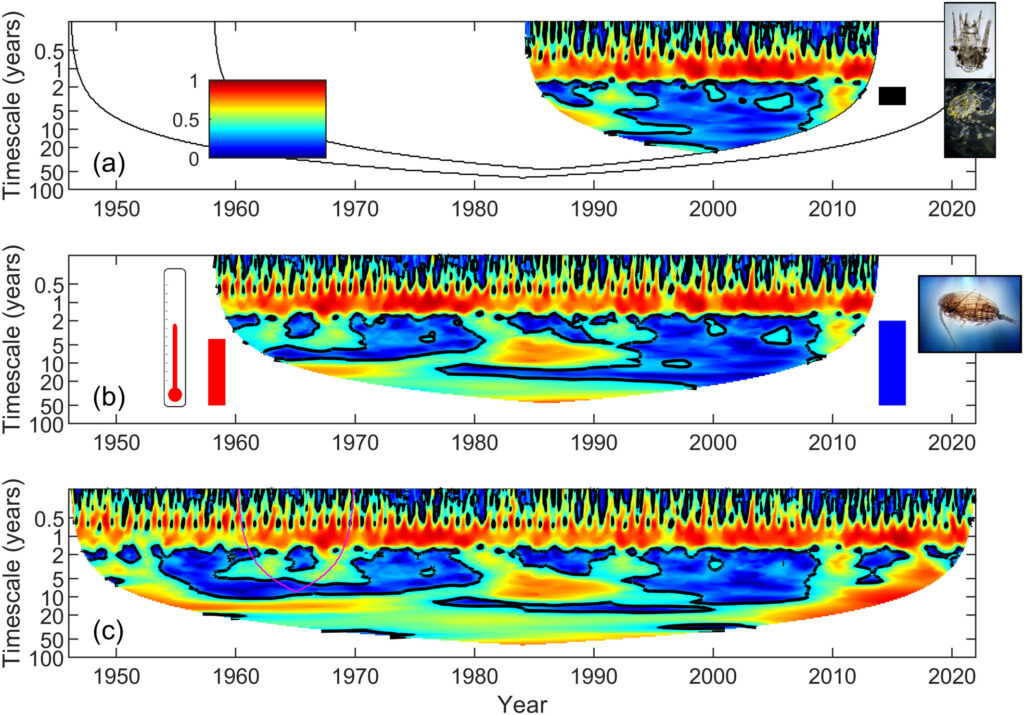Populations of animals and plants – even those separated by thousands of miles – can fluctuate in synchrony, driven by shared environmental influences. This striking phenomenon, known as spatial synchrony, is the subject of a new synthesis study published in Ecology Letters, led by researchers at the University of Kansas and co-authored by Dr Lawrence Sheppard, CPR Research Fellow at the Marine Biological Association (MBA).
The study – Insights into Spatial Synchrony Enabled by Long-Term Data – reveals that understanding spatial synchrony (where populations of the same species in different places rise and fall in number at the same time) benefits immensely from long-term datasets, particularly those capable of capturing ecological changes across multiple timescales. One of the most enduring and important of such datasets is the Continuous Plankton Recorder (CPR) Survey, operated by the MBA with commercial shipping vessel partners all over the world. With almost 95 years of data gathered so far, the CPR Survey represents the largest and longest-running ocean biological survey in the world.

“Long-term data has enabled a number of recent advances in the study of ecological spatial synchrony – the tendency of populations in different places to do the same thing at the same time,” said Dr Sheppard. “The CPR Survey is uniquely positioned to reveal how synchrony operates in marine ecosystems, especially over decades-long long timescales.”
The study highlights that longer time series don’t simply offer more statistical power; more importantly, they introduce new ideas or possibilities that challenge established ways of thinking in ecology. In this context, CPR data has not only improved scientists’ ability to detect synchrony, but has also underpinned the development of new analytical methodologies. These tools allow researchers to identify and study the drivers of synchrony that operate on different timescales.
One such method was introduced in Sheppard et al. (2019, PLoS Computational Biology), using CPR data to show how synchrony in phytoplankton in British seas is shaped by complex interactions between climate variability and ecological interactions, a mechanism known as ‘interacting Moran effects’. This same approach has since been applied to a growing body of global studies, from kelp forests (Castorani et al. 2022, Ecology Letters) to cross-boundary food web dynamics (Walter et al. 2024, PNAS).

Plankton are a vital food source for many marine animals. c. Marine Biological Association
An interesting example from the study shows a pronounced synchronised shift in UK phytoplankton populations in the 1980s (visible as a red feature in the graphic below), coinciding with a well-documented regime shift in the North Sea. Thanks to the CPR Survey’s decadal coverage, the team extended this analysis (Fig. 3c), revealing new long-timescale synchronised changes in recent years. This provides critical insight into marine ecosystem responses to climate change.

Fig. 3a-3c. Insights into Spatial Synchrony Enabled by Long-Term Data
“The advantage of having long-term data on plankton abundance is two-fold,” added Dr Sheppard. “With the right techniques, you can get good statistics about repeating seasonal changes in the data, and also uncover long-timescale changes in the oceans; changes you would otherwise miss.”
Lead author Daniel Reuman from the University of Kansas notes that these insights help researchers to pinpoint environmental drivers of synchrony more effectively than ever before. The tools and frameworks developed are already being used to understand the ecological consequences of climate variability, resource subsidies across ecosystem boundaries, and even impacts on agricultural systems and disease outbreaks.
The CPR Survey’s role in these discoveries underscores the critical value of sustained ecological monitoring. As environmental change accelerates, long-term datasets like those from the CPR Survey are not simply historical records, they are essential tools for understanding, predicting, and managing the future of ecosystems and the resources they provide.
The Marine Biological Association encourages continued investment in the CPR Survey and other long-term monitoring efforts, which have proven indispensable in tackling some of the most pressing ecological questions of our time.
Find out more about the Guinness World Record-winning CPR Survey here.